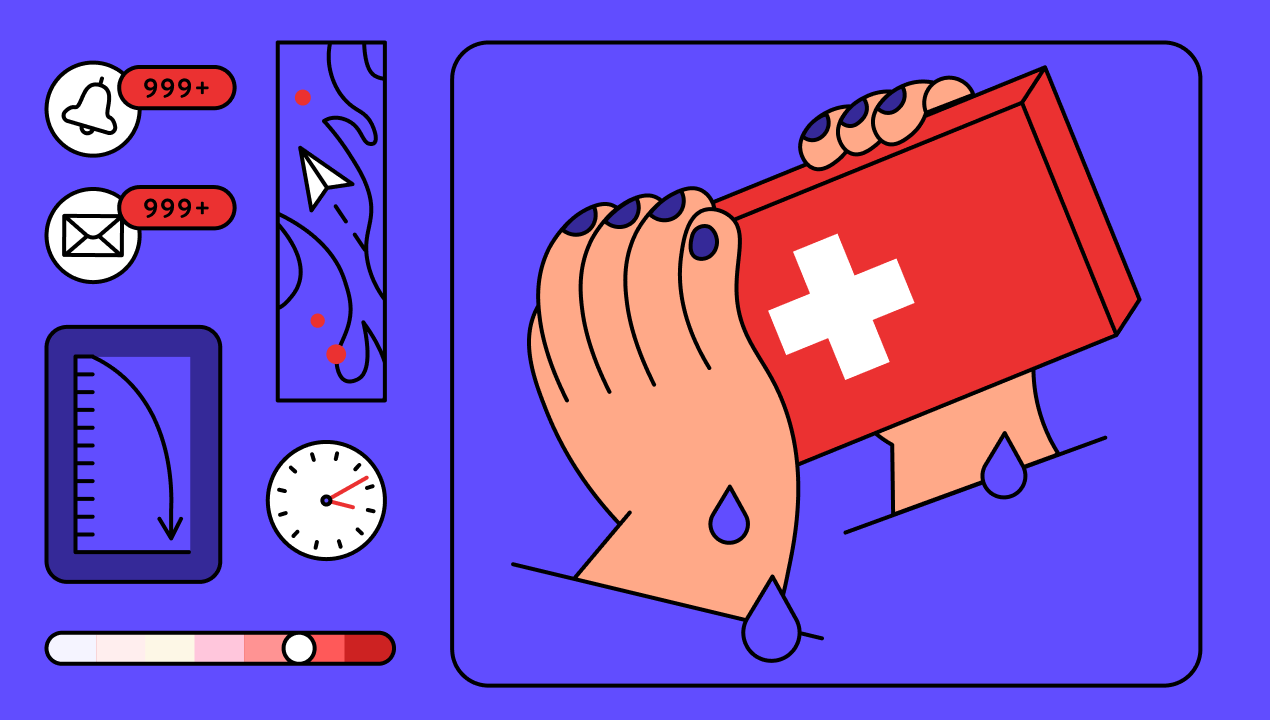If you're already in hot water, the first 15 minutes can exactly define what will happen in the next 15 days. Real-time media monitoring is therefore a frontline defense so that you don't miss the first signs of a crisis getting out of control. That’s why leading PR teams rely on tools like Prowly.
This guide skips the basics. Instead, we dive straight into advanced crisis media monitoring strategies backed by real-world examples from brands like KFC, California Pizza Kitchen, and even the Tiger Woods incident.
Try Prowly's media monitoring free for 7 days
Start tracking your brand and keywords for free (no credit card required) in Prowly.
- Comprehensive monitoring: Track the web, social media, print, and broadcast mentions
- Transparent pricing: Plans start at $258/month
- All-in-one platform: Get everything you need in one tool for PR, incl. media database, outreach, reporting, and more
TL;DR – What you’ll learn in this guide
- How to use real-time alerts to spot crises before they escalate
- Why sentiment analysis drives smarter PR decisions
- How to build high-precision Boolean queries that catch everything
- What to track across digital, social, broadcast, and print media
- How to design crisis dashboards that drive action
- 3 case studies that showcase real-world applications
- 4 recurring themes in successful PR crisis responses
6 advanced best practices for crisis media monitoring
1. Set up proactive alerts and threshold triggers
Monitor all kinds of keywords ahead of time. Your own brand, hashtags, competitors, CEO, stakeholders, or anyone (or anything) that can potentially be at the scrutiny of the media. Additionally, set up alerts for things like an unusual spike in mentions, so you know when a crisis is starting to hit.
🛠️ With Prowly, you can set real-time alerts for spikes in mentions, specific stakeholders, or regional media—giving you a head start on response.
2. Build smarter queries—without the Boolean complexity
Effective monitoring starts with flexible, inclusive queries. Instead of wrestling with traditional Boolean syntax, group keywords into logical themes—like product names, spokespersons, or crisis topics.
Don’t forget to include common misspellings, abbreviations, hashtags, or language variations your audience might use.
💡 Prowly’s intuitive query builder lets you cluster keywords using “ANY,” “ALL,” and “NONE” logic—making it easy to cast a wide net or zero in on specific mentions, all without needing technical expertise.
3. Track sentiment and narrative changes dynamically
Truth is, sentiment simply drives decisions. Are people excited for your new campaign? Confused? Angry with a statement you've put out? Is your brand the laughter of the internet now? An advanced media monitoring PR tactic will have these covered with intuitive dashboards.
💡 Prowly’s dashboards visualize sentiment shifts across all media types—TV, social, online, and print—so you can adjust messaging in real-time.
4. Monitor across the web, social media, TV, and print
While social media usually gets hit first, it's not until it spreads to national broadcasts and more popular magazines that more people hear about it. You know, a Reddit thread will slightly question your integrity, but a segment on the evening news might turn it into a fact for the public.
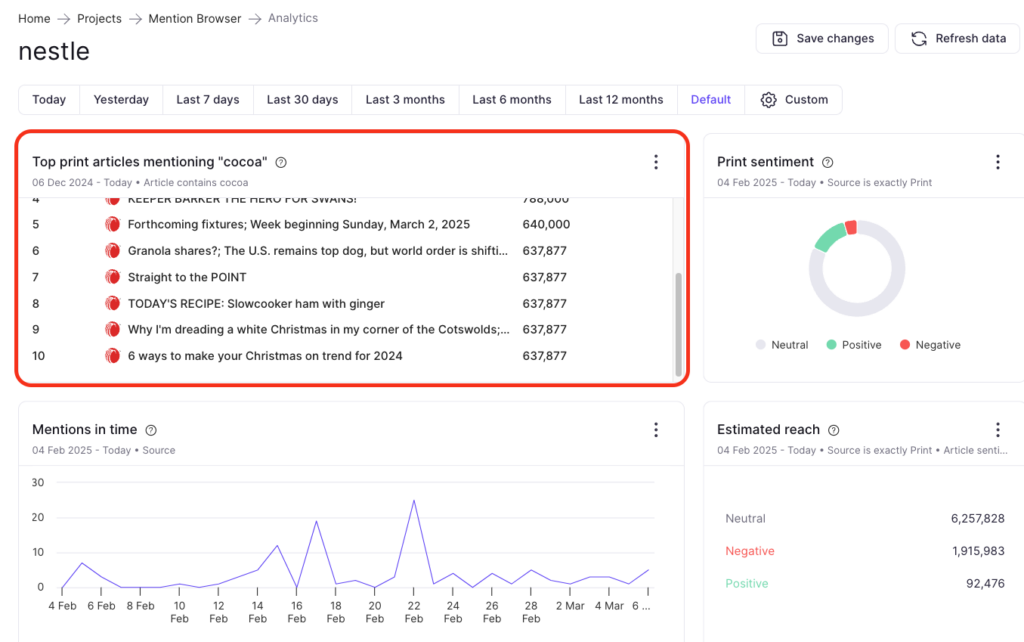
💡 Prowly covers online, social, broadcast, and print channels—so you can spot narratives as they evolve and take action before they hit mainstream media.
5. Build dashboards for crisis response teams
It doesn't matter if they're pretty. It matters if they're actionable at a quick glance. Stakeholders and managers need to view sentiment and volume trends quickly, while social media and PR coworkers need live mentions.
💡 With customizable widgets and real-time data, Prowly dashboards let you build stakeholder-friendly views that highlight key metrics instantly—no spreadsheets required.
Tip: include benchmark metrics from calm periods so your team can immediately spot if something is out of the ordinary.
6. Respond to emerging misinformation quickly
Ready, set, go! When that first comment hits, you literally have about 15 minutes to re-think your entire strategy in that moment. While aiming for a perfect response is crucial, being on time is even more important. What's even better? Having a proactive media monitoring crisis strategy in place.
💡 Prowly’s real-time alerts and keyword spike detection help you catch misinformation the moment it starts trending—so you’re always one step ahead.
Case Study 1: Rolling Hills Estates & Tiger Woods crash
In February 2021, Tiger Woods was injured in a high-speed rollover crash around the Rolling Hills Estates in California, USA. He was twice over the speed limit, collided with a neighborhood sign, crossed into oncoming traffic, and rolled into a tree.
The crash brought intense attention, even though he was reportedly not intoxicated. However, a toxicology test was never conducted because police said there was no probable cause since Woods was lucid and cooperative.
This is an exact scenario where carefully curated Boolean queries and sentiment analysis are the most important, for both Woods as a celebrity, and the Rolling Hills Estates as a community. Things like baseline sentiment dashboards help comms teams view narrative shifts, from shock to speculation.
Then, of course, preventing rumours and misinformation since they're easy to appear out of no where especially when the case involves a high-profile celebrity.
📡 Prowly’s broadcast and local print monitoring capabilities would help comms teams detect narrative shifts early—even before they trend nationally.
Case Study 2: KFC Chicken Shortage in UK
In 2018, UK's KFC ran out of chicken across hundreds of locations nationwide. Days later, more than 600 restaurant chains closed temporarily, sparking debates and rumors on why, along with negative sentiment towards the brand.
Unfortunately, the public's reaction ranged from sarcastic frustration to empathy, but mostly it kept on escalating quite fast on social media. However, KFC shot it all down with humor themselves, rearranging their logo to say "FCK" on an empty bucket as a sign of apology.
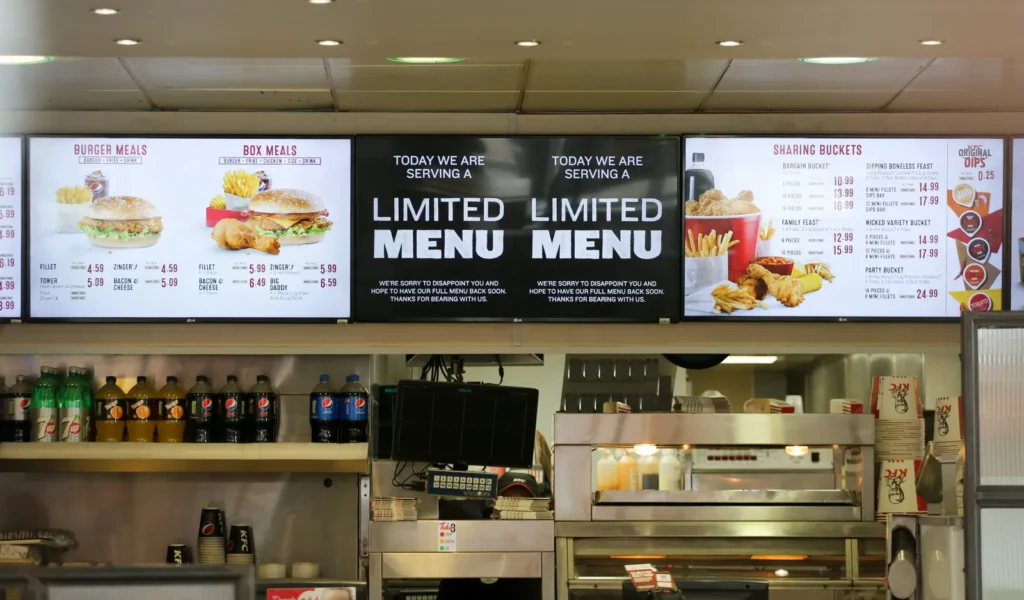
This is a classic example of how real-media monitoring can help in cases like these. Spotting sentiment overflown with negativity (but some humor), their team was probably able to assess who the critics within the audience are, and turned a potential PR disaster into a cheeky brand win.
📈 By visualizing sentiment patterns using Prowly’s customizable dashboards, PR teams can quickly adapt tone and messaging—turning a crisis into an opportunity.
Case Study 3: California Pizza Kitchen TikTok Crisis
Around July 2024, a user named Riley (@fumptruck) went viral on TikTok after there was nothing but cheese in her mac & cheese order from California Pizza Kitchen. The video had over 3 million views and sparked a hefty conversation in the comments.
While things like these happen and it could have been a simple human error, the community did not leave a dry thread on California Pizza Kitchen. Had the company not utilized platform-specific monitoring, they would miss their shot on responding to the crisis effectively.
In return, California Pizza Kitchen sent Riley a care package and a voucher for completely free mac & cheese for a year.
Additionally, because they knew the sentiment and humor of their audience, they launched a funny chef video showing how to make the dish properly. You know, actually add the pasta.
P.S. We've gathered 16 more crisis management examples—explore them all here.
4 key themes across effective crisis management
To continue using the same examples, let's follow up on what similarities all the above mentioned case studies had. There are surely plenty of other occurrences which would fit here as well, but for the purpose of this article, we'll focus on what we've discussed.
In order to effectively put out their own fire, media monitoring crisis teams look for similarities across the strategies and responses of brands to shape their own approach. Here are the four key themes that emerge:
Theme 1: Speed
Each one of these teams responded quickly before the topic died down or got out of hand. The reason they were able to do it usually consists of several different things: effective media monitoring using solid PR crisis communication tools, a proactive crisis management plan, and making sure everyone at the organization knows what they need to do when a situation like this arises.
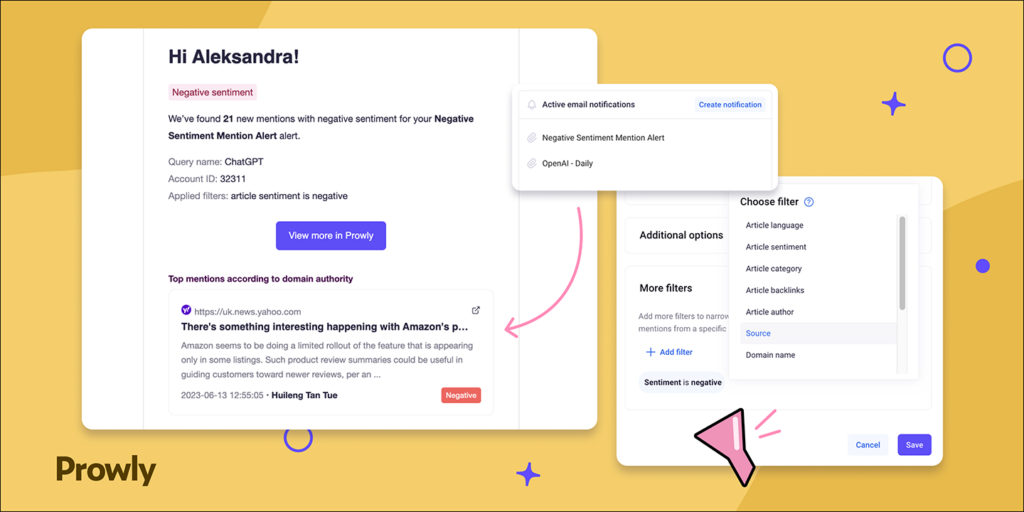
Most of the time, the best crisis management teams have several statements ready long before anything happens. These statements just sit there, waiting to be used, but they're usually vetted by all the stakeholders, align with the company's voice and tone, and ensure everyone is prepared as much as possible.
⚡ Prowly’s immediate alert system and email digests ensure no key moment is missed.
Theme 2: Real-time alerting
Media monitoring in crisis management is sort of the same, but then different. Yes, they also create queries of all the keywords that need to be tracked, but they're much more meticulous and detailed in doing so.
Real-time monitoring tools that allow for Boolean queries and platform-specific alerts are key here.
Just because you're going down on TikTok, doesn't mean your Facebook community shares the same sentiment. By knowing these nuances, teams can better understand what's going on and respond successfully.
💡 With Prowly, you can set tailored alerts for each platform and issue—so no comment, tweet, or local news report goes unseen. And here you can compare Google and Prowly alerts.
Theme 3: Platform-specific communication
A short, snappy video will probably not work for the audiences that watch national television, so knowing what content to place on what channel is absolute key. For all the companies we've discussed above, their response strategies were effectively tailored to the platforms and channels where the conversation first began.
Takeaway? There's no such thing as one-size-fits-all messaging. Especially in times of a fragmented media landscape.
💡 Prowly helps PR pros identify which channels are gaining traction through intuitive filtering by source type—TV, radio, blogs, or social.
Theme 4: Thorough sentiment analysis
Sentiment isn't just a cool graph that shows who's happy and who's upset. In sentiment analysis crisis PR, it becomes a tactical lever that shapes the tone of apologies, guides replies, and helps organizations stay ahead of misinformed gossip.
💡 Track mood in real-time, not just numbers. Prowly helps tailor response tone by mapping sentiment across stakeholder groups.
P.S. Don’t stop here—our PR crisis management guide is packed with extra tactics the pros keep to themselves.
Stay ahead of any comment with real-time media alerts PR crisis teams rely on. Start your free 7-day trial with Prowly. No contracts, no credit card needed.
How Prowly helps in media monitoring for crisis teams
#1 Real-time alerts
What's good about an alert that will come several hours after the comment has been posted? Absolutely nothing. In this day and age, Kerry will write something at 1:02pm, and by 2:00pm you have a full-blown crisis in the comments if whatever Kerry wrote sticks the wrong way.
With Prowly, you'll get immediate, real-time alerts delivered right into your inbox. This is in addition to special alerts, such as a spike in mentions so you know there's something cooking up if you get it. Pretty sure that's exactly how California Pizza Kitchen caught their viral TikTok video before it got out of control.
#2 Sentiment analysis
Prowly's tools measure the exact feeling your audience has about whatever campaign you've put out. The tool will track mentions in comments, on forums, customer feedback, and more, so you know if they're rather positive or negative towards an event.
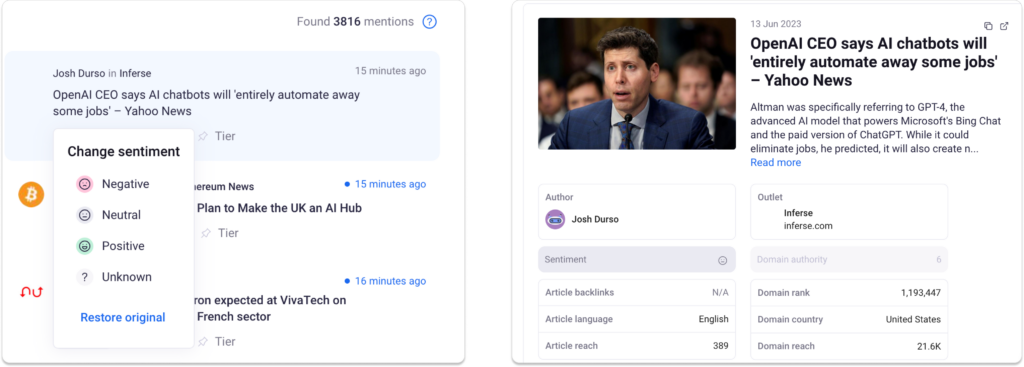
For example, in the above-mentioned KFC chicken outage, the team must have monitored the sentiment closely in order to know if they need to come out with a formal apology, or add a bit or laughter.
#3 Offline tracking
With Prowly, you can monitor traditional media such as newspapers, magazines, and broadcast television. Therefore, if something has shown up even in local news, you'll know about it right away. That was probably the case in the Tiger Woods crash.
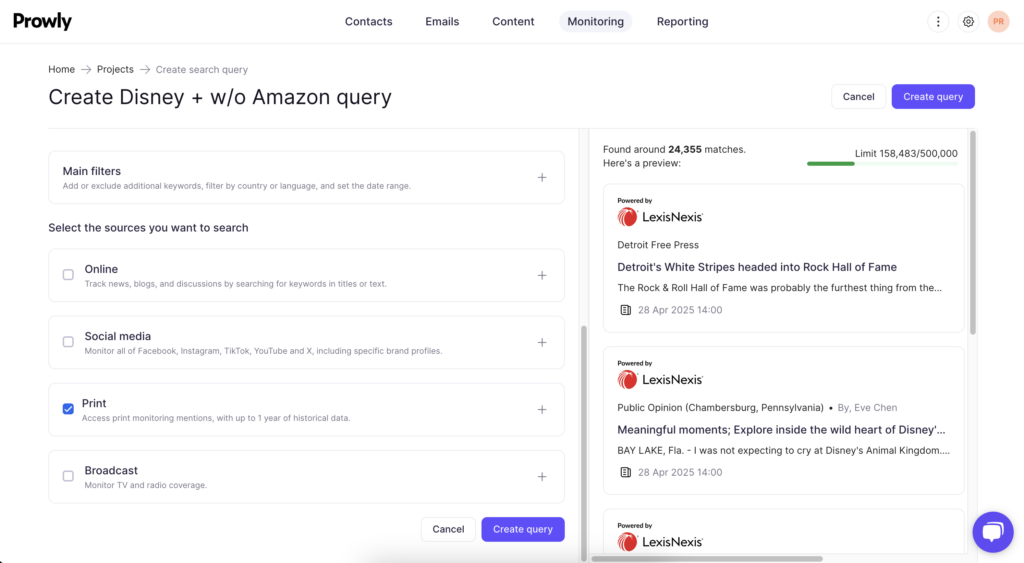
Although he's a celebrity, the community is pretty tight knit in these areas in California. Before national outlets picked it up, you bet it was local TV, radio, and newspapers that wrote about it first. Without proper offline monitoring, it would be nearly impossible to spot these mentions.
#4 Comprehensive dashboards
Life isn't easy when you need to juggle several tabs in order to digest all the information. That's why Prowly features easy-to-read dashboards, so you can quickly spot trends, opportunities, and outliers just by looking at it.
It's also effective if you're trying to explain something to a stakeholder that might not necessarily understand PR. After all, everyone understands the basics of when a line goes up, down, or what colors mean.
👉 Looking for more crisis management tools? This comparison covers 6 top-rated PR crisis management platforms.
Quick FAQ
💬 How does media monitoring help in a crisis?
Media monitoring allows teams to quickly understand what is going on in their respective landscape, where did the crisis appear first and who started it. Additionally, it also allows teams to check out what their competitor's are doing when a crisis hits them, so they can learn from their successes and failures.
💬 Why is real-time media monitoring important for crisis communication?
Real-time media monitoring is an indispensable component of all successful crisis strategy. It helps teams assess the risks of current issues, spot communications they need to respond to immediately, and prioritize in times of havoc.
That way, they can engage the right stakeholders to speak to the public, coordinate with other people, and minimize the damage to a minimum.
Final thoughts
If there's one thing you should take away from this post, it's the notion that if you're not prepared, you're already behind and failing. Those little first signs of negative comments here and there surely build momentum and can potentially spiral down further rather quickly.
Prowly gives you the right tools and features to pick up on the first spark and not be caught in a surprise. Start your 7-day free trial today and experience how media monitoring for crisis teams can turn your work from reactive to proactive.
